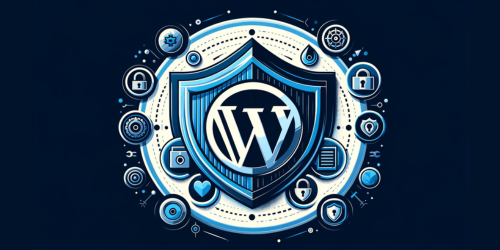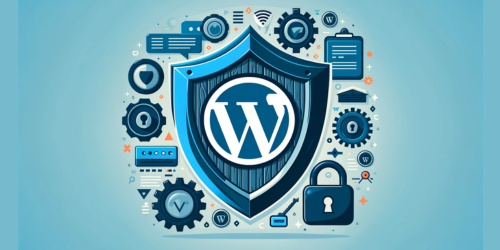Have you ever waited for a website to load, tapping your fingers impatiently? In our fast-paced digital world, speed isn’t a luxury; it’s a necessity. For WordPress users, this rings especially true. The speed of your website doesn’t just impact user experience; it also affects your search engine rankings and overall digital footprint.
In this guide, we’ll embark on a journey through the realm of WordPress speed optimization. But this isn’t your average, run-of-the-mill guide. Together, we’ll uncover the secrets of quick-loading sites, delve into advanced optimization techniques, and navigate common pitfalls with the finesse of a seasoned pro. From selecting the right hosting to leveraging caching and beyond, every aspect of speeding up your WordPress site will be brought to light.
Remember, in the digital age, every second counts. So let’s not waste any more time and get your WordPress site up to speed!
Key Takeaways:
- Essential Speed Optimization Techniques
- Advanced Optimization Strategies
- Common Pitfalls and How to Avoid Them
1. Choosing the Right Hosting Solution
In the world of WordPress, your hosting solution is like the foundation of a building – it needs to be strong, reliable, and capable of handling whatever you throw at it. The right hosting can be the difference between a snappy, responsive site and a sluggish, frustrating experience for your users.
Let’s break it down:
- Shared Hosting: This is the economical option where your site shares resources with other websites on the same server. It’s a viable choice for small blogs or personal websites but might struggle under the weight of higher traffic.
- VPS Hosting: A Virtual Private Server offers a middle ground. You get more resources and better performance than shared hosting without the hefty price tag of dedicated hosting.
- Managed WordPress Hosting: This is the VIP treatment. Everything is optimized for WordPress. You get faster speeds, robust security, expert support, and automatic updates.
2. Leveraging Caching for Enhanced Speed
Caching in WordPress is like having a photographic memory for your website. It stores copies of your pages and posts, which means the server has less work to do the next time someone visits. The result? Lightning-fast load times.
Here’s what you need to know:
- Benefits: Reduced load on your server, faster page loading for returning visitors, and an overall smoother user experience.
- Top Plugins: W3 Total Cache and WP Super Cache are frontrunners. They’re versatile, user-friendly, and can significantly speed up your website.
- Customization: Tailor your caching settings. Enable browser caching, set up page caching, and don’t forget about object and database caching.
Remember, caching isn’t just about speed; it’s about creating a seamless experience for your users. To know more Guides on enhancing WordPress site speed Delve into WPPedia’s article.
3. Effective Use of Content Delivery Networks (CDNs)
Imagine your website’s data traveling across the globe at breakneck speeds. That’s what a CDN does. It’s a network of servers, each storing a copy of your website, so when someone accesses your site, they’re downloading it from the nearest server.
Why it matters:
- Speed: A CDN can drastically reduce load times, especially for international visitors.
- Integration: Integrating a CDN with WordPress is straightforward. Plugins like Cloudflare make it easy.
- Choosing the Right CDN: Factors like your audience’s location, the size of your website, and your budget play a role. MaxCDN and Amazon CloudFront are popular choices.
In essence, a CDN doesn’t just speed up your website; it brings it closer to your audience.
4. Minimizing HTTP Requests and Reducing Load Times
Every image, script, or CSS file on your site is an HTTP request. More requests mean more load time. The goal? Minimize these requests.
Strategies include:
- Reducing Assets: Combine CSS and JavaScript files. Tools like WP Rocket can help.
- Optimizing Assets: Compress images without losing quality using tools like Smush.
- Efficient Loading: Implement lazy loading for images and videos. They’ll only load when they’re visible on the screen, reducing initial page load time.
These techniques trim the fat off your site, making it lean, mean, and fast.
5. Database Optimization for WordPress
Your WordPress database can become cluttered over time with revisions, spam comments, and transient options. Regular cleaning keeps your website running smoothly.
Key points:
- Importance: A streamlined database means faster retrieval of information and quicker loading times.
- Tools: WP-Optimize is a great plugin for cleaning up your database.
- Routine Maintenance: Regular check-ups keep your database healthy. Schedule them to ensure consistent performance.
Think of it as spring cleaning for your website.
6. Advanced WordPress Optimization Techniques
Now, let’s talk about some high-level optimizations.
- Elasticsearch: This search engine improves the speed and accuracy of queries to your WordPress database. ElasticPress is a plugin that integrates Elasticsearch with WordPress.
- Lazy Loading: This isn’t about being lazy; it’s about being smart. Lazy
For more insights Delve into How to Diagnose slow WordPress site?
7. Conclusion
In our journey to supercharge your WordPress site, we’ve traversed through the essentials of hosting selection, the magic of caching, the power of CDNs, and the art of minimizing HTTP requests. We’ve also dived deep into database optimization and explored advanced tactics like Elasticsearch and lazy loading.
Remember, the quest for speed is ongoing. Regular maintenance, staying updated with the latest technologies, and continuous optimization are your keys to maintaining a lightning-fast WordPress website. Keep these strategies in your arsenal, and your site will not just meet but exceed the expectations of your audience in speed and performance. Keep optimizing, keep evolving!
8. FAQ Section
Q: How do I optimize my WordPress site speed?
A: Optimize your WordPress site speed by implementing caching, compressing images, minimizing plugins, using a content delivery network (CDN), and choosing a fast hosting service.
Q: How can a WordPress website be designed for optimal performance?
A: Design for optimal performance by selecting a lightweight theme, optimizing images, using efficient coding practices, and regularly updating WordPress and plugins.
Q: How can I speed up my website and improve performance?
A: Improve performance by enabling caching, optimizing images, reducing server response time, and minimizing the use of resource-heavy plugins. To know How to increase WordPress site speed without plugin ? You need to delve into this.
Q: How do I make WordPress blazing faster?
A: To make WordPress blazingly fast, implement advanced caching techniques, optimize database performance, utilize a CDN, and ensure you’re on a high-performance hosting plan.



